Work brings me regularly to Monterrey in Nuevo Leon, northern Mexico. Monterrey is a big industrial city, with industrious people. It is a special city because the surrounding Parque Nacional Cumbres de Monterrey redeems the city’s many environmental sins. The city proper is butt ugly, but if you are like me or MC Hammer, that doesn’t matter. And if you like birding, it’s a good place to spend time before or after meetings and explore. I always pack binoculars.
Late autumn 2022, I decided flying in a day early to do some weekend birding. I was joined by my colleague Mauricio, his wife Melba, and my friend David. It was David’s first time birding. Mauricio and Melba picked me up and if it weren’t for the Coyote we saw on the way it would have taken us 5 minutes to reach Chipinque Parque Ecologico. Now it took 6. It is truly amazing how quickly you leave the city behind and reach the oak-pine forests on the hills/mountains of the Cumbres NP. We were inside the park before dawn. A Mexican Whip-poor-will welcomed us on our hike up.
The run rose in a glorious spectacle of colours thanks to Monterrey’s air pollution. Now it was a bit lighter, diurnal birds became vocal. I phished a troupe of Green Jays and amazingly they started giving me lip, calling me all sorts in jayeese. Rude! The ensuing conversation got me nicknamed “Snow White” by my young friends. I’d preferred Dr Dolittle, but millenials don’t know that movie. We also saw Brown Jay and Mexican Jay and they were more polite. Acorn Woodpecker and Black-crested Titmouse were plentiful and confiding. David learned three things that day. Never use another man’s binoculars, very likely they were wrapped in underwear. That lesson came too late. Also, shouting out “look on that branch” is not helpful in a forest and he did a lot of that. But most importantly, Chipinque is a natural treasure worth showing to your kids.
For my next visit in the following summer, we decided to organize a company birding trip to La Estanzuela – another treasure spot in the Cumbres. Amazingly, everyone showed up at dawn except for one person, who’d had a near-death experience with me on Colombia’s Sumapaz paramo, an acceptable excuse for a no-show. Kingfisher Birdwatching Nuevo León would provide our guides (and the bird photographs for this post – gracias!). We met Marilyn and Leonardo at a non-descript fast-food joint’s parking lot and within 10 minutes we were in Parque Nacional La Estanzuela. La Estanzuela apparently is best avoided in the weekends because the place was teeming with Spandex-clad people pouting their lips, taking selfies and talking loudly. Fortunately, Leonardo has amazing hearing. Legend has it he can hear birds as far away as Guatemala. That day, he limited himself to showing us Buff-bellied Hummingbird, Golden-olive Woodpecker, Sulphur-bellied Flycatcher, Rose-throated Becard, Grey-collared Becard, Spot-breasted Wren, Olive Sparrow, Hepatic Tanager, Blue Bunting and Stripe-crowned Warbler. We heard Elegant Trogon and Thicket Tinamou, but for those birds the combination of gaudy clothing, duckfaces and noise was just too much to overcome. A weekday would be better for timid birds.
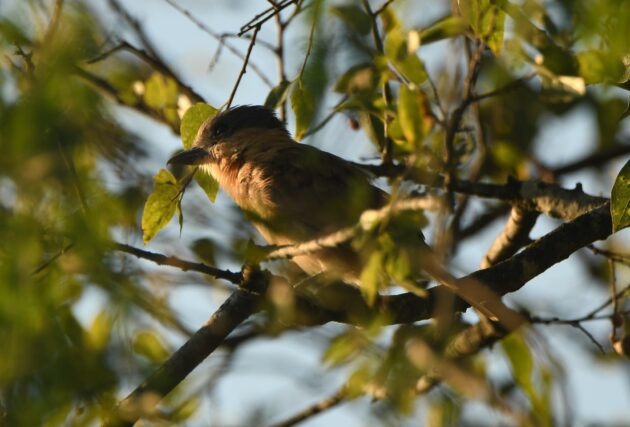
While my colleagues made a lot of fun of my clothes (I was cruelly compared to the boy scout from the movie Up!) the tick repellent in them worked. On the other hand, colleague Kathia developed an intimate relationship with a tick (feeding on her “exquisite blood” – her words) and a doctor’s visit was required. And all she did was sit down on a bench to text a friend how great birding is… So beware.
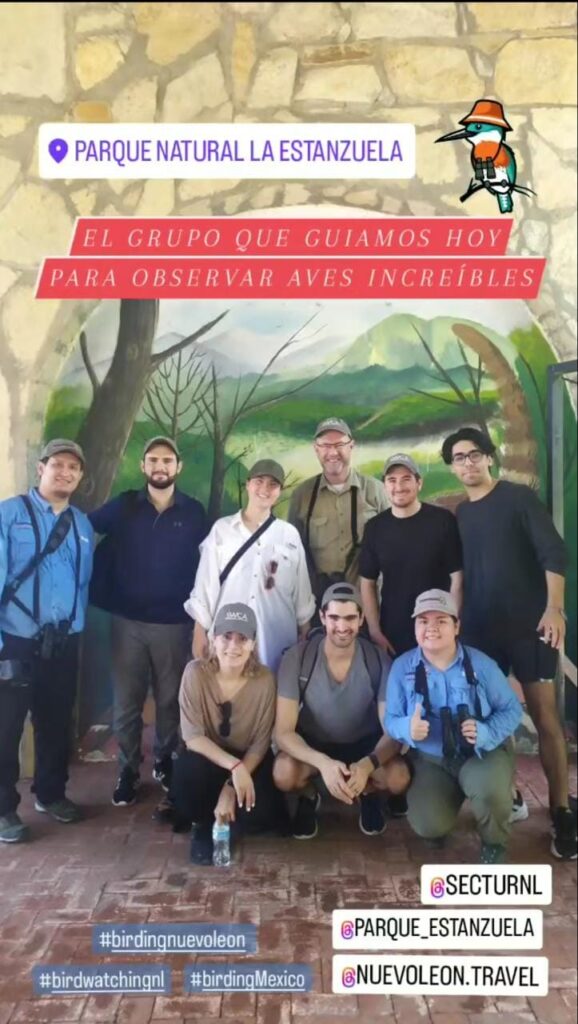
Going birding with newbies is fun and it is important to spread the conservation message, but there’s only so much a hardcore birder can stand. So, I hired Kingfisher Birdwatching Nuevo León for a trip on my own after I’d come back from my travels to Colorado. Marilyn and Leonardo picked me up at 4:30 hrs and we drove to our first stop: Pastizales de Santiago. Arriving while it was still dark allowed us to catch an endemic Tawny-collared Nightjar in action. Light broke and after Couch’s Kingbird I spotted my 2000th lifer: Crimson-collared Grosbeak. A very good celebratory bird. The male is beautiful (duh) but the female is very striking too, yellow instead of red. We also scored with Blue Grosbeak, Yellow-faced Grassquit, Golden-fronted Woodpecker and Ladder-backed Woodpecker. The day was only minutes old and we already had 32 species on the day list. This was going to be epic.
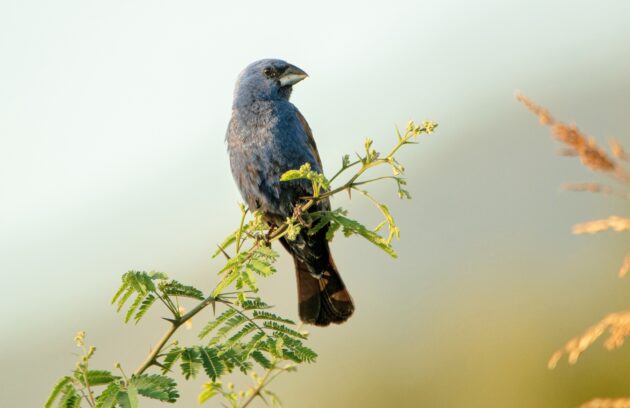
On the way up into Cumbres we stopped at a flowering agave near Laguna de Sánchez. Agaves bloom once in their life and then die. The plant builds up a sugar reserve to produce the enormous flower. This sugar is what Mexicans craftily turn into tequila. Mexicans drink tequila from glasses but I have been told you can drink from someone’s navel too. Allegedly. And besides, we were younger then. Our agave flower stalk had three species of hummingbird drinking nectar, dive-bombing and stabbing each other: Blue-throated Mountain-gem, Lucifer Hummingbird and Broad-tailed Hummingbird. It was amazing. That plant would not die in vain.
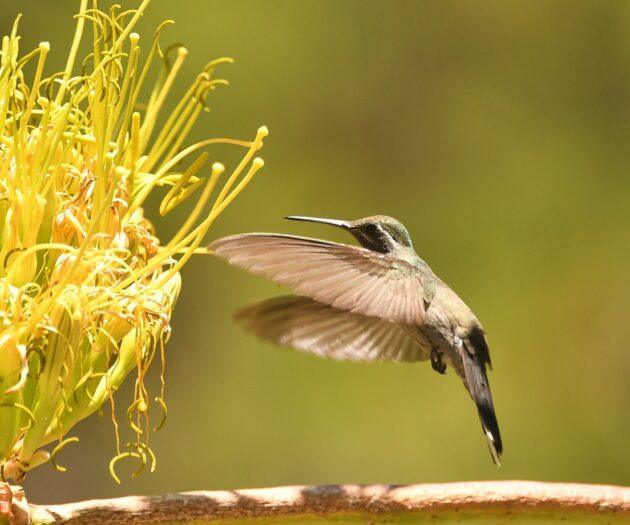
We finally reached Mesa de Oso, the table (mountain) of the bear. Our main goal here was the Maroon-fronted Parrot. These parrots breed inside cavities in cliffs and they are very particular about the cliff. It must face the sun at the right time of day, the material needs to be good for excavating but not too soft to avoid collapsing tunnels, it needs to be steep, and the list goes on and on. Location, location, location. We now know what real estate agents reincarnate into in their next life… but unlike realtors, these parrots are rare, Nuevo Leon endemics and in need of conservation support. Marilyn is always excited about any bird she sees (a very charming characteristic), but with the parrots she went in overdrive. I can’t fault her for that – just look at them!
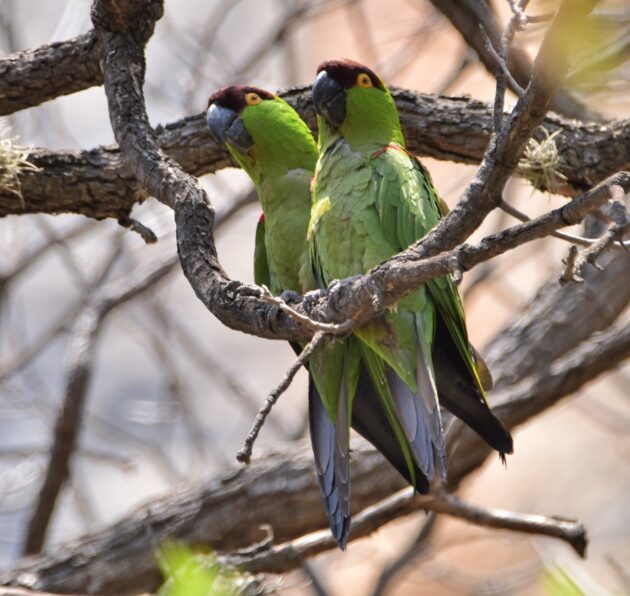
There were a lot of other birds in the pine-oak forest. Several of my clients sponsor a project right near the parrot cliff. The project’s objectives are water-related but White-eyed Vireo, Long-billed Thrasher, Brown-backed Solitaire, Crescent-chested Warbler, Rufous-capped Brushfinch, Audubon’s Oriole, Painted Redstart, Flame-colored Tanager and White-breasted Nuthatch don’t care and benefit from the conservation effort.
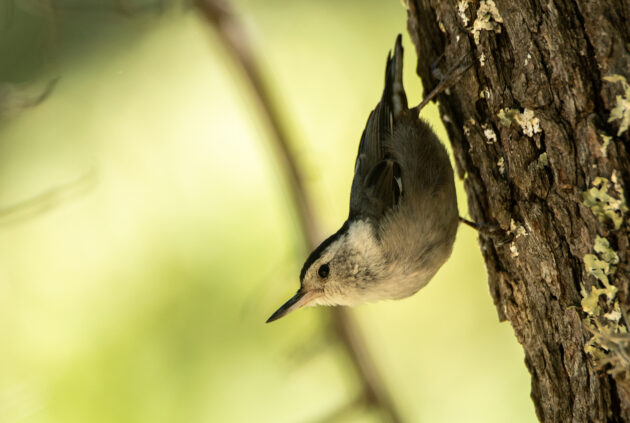
On the way down to the city, the many stops and turns on the curvy road got the better of me and we had to stop at the picnic spot Plaza Las Hadas in Santiago. A judgmental Great Kiskadee watched a veteran of Southern Ocean pelagics emptying his stomach in a wastebin… Once recovered we did a walk-around and met Plain Chachalaca with young. I felt better after that.

Source link
Facebook
Pinterest
Twitter
LinkedIn

